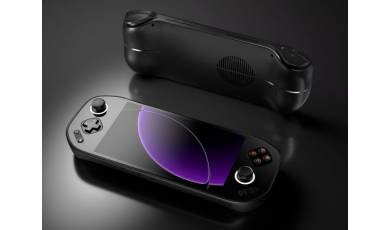Flash firmware on Sony Xperia L1
Mobiles >> Sony >> Sony Xperia L1| Specifications | Reviews | Secret codes |
| Unlock phone | Root phone |
| Backup | Flash Firmware | Screenshot |
How to flash Sony Xperia L1?
Why reinstall the firmware?
Errors constantly appear in the Android OS.
Some installed applications stop opening.
Many programs from the Play Market do not work.
The phone turns off for no apparent reason.
The phone started to work slowly.
You are not satisfied with the possibilities of the stock firmware.
Where can I find the firmware?
On the official website of the phone manufacturer.
On sites where developers post custom or official OS.
What should be done before installing the firmware?
Back up your contacts and user data and transfer it to your computer.
Insert your SD card into your phone. An SD card is needed to write firmware to it.
Determine your smartphone model.
Fully charge your phone. If the battery runs out during boot, the device will no longer turn on.
Download archive with Firmware. Place it on the SD card.
Installing TWRP Recovery
Download the Official TWRP App to your phone from the Play Market. And install this app.
When you start the application for the first time, you must agree to install the firmware, as well as agree to grant the application Superuser rights and click the 'OK' button.
On the next screen, select 'TWRP FLASH' and give the application root rights.

On the main screen of the application, click 'Select Device', and select your phone model.
After selecting a device, the program redirects the user to a web page to download the corresponding image file of the modified recovery environment. Download the suggested *.img file.
After downloading the image file, return to the main screen of the Official TWRP App and press the 'Select a file to flash' button. Select the file downloaded in the previous step.
Press the 'FLASH TO RECOVERY' button and confirm your choice, press 'OK'.
When the message 'Flash Completed Succsessfuly!' appears. Click 'OK'. The TWRP installation procedure is now complete.
Write the firmware to the SD card. Using a PC or laptop card reader.
Insert a SD memory card into the phone.
To reboot into recovery, you need to enter the menu accessible by pressing the button with three stripes in the upper left corner of the main screen of the application. Select 'Reboot' and then click on the 'REBOOT RECOVERY' button.
Firmware via TWRP

Before flashing, you need to delete all user data from the phone, this will avoid errors in the software, as well as other problems. Press 'WIPE' on the home screen.
You can start flashing. Click the 'Install' button.

The file selection screen appears. At the very top is the 'Storage' button, select the location where the firmware file is located.
Select the location where the files were copied. Press the 'OK' button.

Find the file we need and click on it. A screen opens with a warning about possible negative consequences, you need to check the item 'Zip signature verification', which will avoid using corrupted files when writing to the phone's memory sections.
The procedure for flashing the phone will begin, this is accompanied by the appearance of inscriptions in the log field and the movement of the progress bar.
After the firmware installation procedure is completed, the 'Successful' message appears on the screen.
Summary: Type: Smartphone, Phablet; Smart Phone OS: Android; OS ver: Android 7.0 Nougat; SIM: Nano SIM, Single SIM, Dual SIM; CPU: MediaTek 64bit MT6737T Quad Core Processor; Processor Speed: 1,45 GHz x4; Storage: 16GB; RAM: 2GB; External Storage: microSDXCup to 256GB; Battery: 2620 mAh; Screen Size: 5.5 inches; Resolution: HD (720 x 1280); Main Camera: 13 MP; Front Camera: 5 MP; Features: WiFi , GPS , Bluetooth , Flash; Dimensions: 151 x 74 x 8.7 mm; Weight: 180 g; ...
Comments, questions and answers on the flash firmware Sony Xperia L1
Ask a question about Sony Xperia L1




